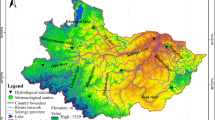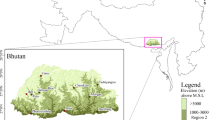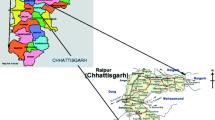Abstract
In this study, minimum (i.e., outlier or extreme) total monthly rainfall data recorded in the East Anatolia region (EAR) in Turkey were examined. Trend cases of thirteen stations in the EAR were analyzed using the Mann–Kendall (MK) trend and Şen trend tests. The homogeneity test and autocorrelation functions of the data of the stations were considered to comment. The analyses in this study were based on approximately 60-year (1960–2019, except for 17203 (1961–2019), 17285 (1961–2019), and 17204 (1964–2019)) records at thirteen meteorological stations. Drought cases in the previous studies for the EAR were also compared with the trend results of this study. The findings showed that there was no statistically significant trend for twelve stations except for the 17285 according to the MK trend test. Although seven stations (17046, 17201, 17100, 17097, 17199, 17204, and 17165) had a statistically significant upward trend, four stations (17203, 17094, 17285, and 17172) had a statistically significant downward trend according to the Şen trend test. Two stations (17099 and 17096) had no statistically significant trend. In the light of these findings, the statistically significant trends in minimum total monthly rainfall reported above should be considered in water resources management, engineering structures, biological/chemical processes, atmospheric conditions, and social-economic issues.





Similar content being viewed by others
Data availability
Data are available on request due to privacy or other restrictions.
Code availability
Not applicable.
References
Akyürek Z, Surer S, Beser Ö (2011) Investigation of the snow-cover dynamics in the Upper Euphrates Basin of Turkey using remotely sensed snow-cover products and hydro meteorological data. Hydrol Process 25:3637–3648. https://doi.org/10.1002/hyp.8090
Alexander LV (2016) Global observed long-term changes in temperature and precipitation extremes: a review of progress and limitations in IPCC assessments and beyond. Weat Clim Extr 11:04–16
Altınbilek D (2004) Development and management of the Euphrates-Tigris basin. Water Resour Dev 20:15–33
Aral MM (2011) Editorial: Surgery was successful but the patient died. ASCE J Hydrol Eng 16(2):91–92
Aral MM (2014a) Perspectives and challenges on climate change and its effects on water quality and health. Water Qual Expo Health 6:1–5. https://doi.org/10.1007/s12403-014-0125-7
Aral MM (2014b) Climate change and persistent high temperatures: does it matter? Front Environ Sci. 2:45. https://doi.org/10.3389/fenvs.2014.00045
Ay M (2013) Sürdürülebilirlik kavramı ve su (Sustainability concept and water). IV. Ulusal Çevre ve Ekoloji Öğrenci Kongresi (IV. National Environment and Ecology Student Congress) (UÇEK-2013), Bildiri Kitabı, Sayfa: 42–52, 08–09 Şubat, Hacettepe Üniversitesi, Ankara, Türkiye
Ay M (2020) Trend and homogeneity analysis in temperature and rainfall series in western Black Sea region, Turkey. Theo App Clima 139(3–4):837–848
Ay M (2021) Trend tests on maximum rainfall series by a novel approach in the Aegean region, Turkey. Meteorol Atmos Phys 133(4):1041–1055
Ay M, Karaca ÖF and Yıldız AK (2018) Comparison of Mann-Kendall and Sen’s innovative trend tests on measured monthly flows series of some streams in Euphrates-Tigris Basin. Erciyes Üniversitesi Fen Bilimleri Enstitüsü Dergisi, 34(1): 78–86, ISSN: 1012–2354
Blöschl et al (2017) Changing climate shifts timing of European floods. Science 357(6351):588–590. https://doi.org/10.1126/science.aan2506
Blöschl et al (2019) Twenty-three unsolved problems in hydrology (UPH) – a community perspective. Hydr Sci J 64(10):1141–1158. https://doi.org/10.1080/02626667.2019.1620507
Blöschl G, Gaál L, Hall J, Kiss A, Komma J, Nester T, Parajka J, Perdigão RAP, Plavcová L, Rogger M, Salinas JL, Viglione A (2015) Increasing river floods: fiction or reality? WIREs Water 2(4):329–344. https://doi.org/10.1002/wat2.1079
Blöschl G, Montanari A (2010) Climate change impacts-throwing the dice? Hydrol Process 24:374–381
Bozkurt D, Sen ÖL (2013) Climate change impacts in the Euphrates-Tigris Basin based on different model and scenario simulations. J Hydrol 480:149–161
Bozkurt D, Sen OL, Hagemann S (2015) Projected river discharge in the Euphrates-Tigris Basin from a hydrological discharge model forced with RCM and GCM outputs. Clim Res 62:131–147
Bradley JV (1960) Distribution-free statistical tests. Prentice Hall, Englewood Cliffs. WADD Technical Report 60–661
Dabanlı İ, Şen Z (2018) Classical and innovative-Şen trend assessment under climate change perspective. Int J Glob Warming 15(1):19–37
Díaz S et al (2018) Assessing nature’s contributions to people. Science 359(6373): 270-272. https://doi.org/10.1126/science.aap8826
Giddens A (2011) The politics of climate change. 978–0745655147, 272 pp
Gleick PH (2018) Transitions to freshwater sustainability. PNAS 115(36):8863–8871
Güçlü YS (2020) Improved visualization for trend analysis by comparing with classical Mann-Kendall test and ITA. J Hydrol 584. https://doi.org/10.1016/j.jhydrol.2020.124674
Hadi SJ, Tombul M (2018) Long-term spatiotemporal trend analysis of precipitation and temperature over Turkey. Meteorol Appl 25:445–455
Helsel DR and Hirsch RM (2002) Statistical methods in water resources. United States Geological Survey
IPCC (2007) (Intergovernmental Panel on Climate Change), Climate change 2007: the physical science basis. Contribution of Working Group I to the Fourth Assessment Report of the Intergovernmental Panel on Climate Change. New York: Cambridge University Press
IPCC (2008) Climate change and water. Technical Paper of the Intergovernmental Panel on Climate Change. 28th Session. 09–10 April, Budapest, IPCC-XXVIII/Doc.13. Some people: Osman, B., Payne, R., Nurse, L., Bates, B.C., Kundzewic, Z.W., Wu, S. (eds)
IPCC (2014) Climate change: synthesis report. Contribution of Working Groups I, II and III to the Fifth Assessment Report of the Intergovernmental Panel on Climate Change [Core Writing Team, R.K. Pachauri and L.A. Meyer (eds.)]., Switzerland, 151 pp
Kadıoğlu M (2019) Bildiğiniz Havaların Sonu. 2. basım, 978–605–80178–7, 45101, 272 pp
Katz RW, Brown BG (1992) Extreme events in a changing climate: variability is more important than averages. Clim Change 21:289–302. https://doi.org/10.1007/BF00139728
Kendall MG (1975) Rank correlation methods. Oxford University Press, New York
Kibaroglu A (2019) State-of-the-art review of transboundary water governance in the Euphrates-Tigris river basin. Int J Water Resour Dev 35(1):04–29. https://doi.org/10.1080/07900627.2017.1408458
Kibaroglu A, Scheumann W (2013) Evolution of transboundary politics in the EuphratesTigris river system: new perspectives and political challenges. Glob Gov 19:279–307
Kottegoda NT (1980) Stochastic water resources technology. Macmillan Press Ltd., London, 2–3, 21, 112–113
Kurnaz ML (2019) Son Buzul Erimeden. 978–605–09–6611–4, 11940, 477pp
Mann HB (1945) Nonparametric tests against trend. Econometrica 13(3):245–259. https://doi.org/10.2307/1907187
Meteoroloji Genel Müdürlüğü (MGM) (2021) Rainfall evaluation for 2020. Hidrometeoroloji Şube Müdürlüğü, Ocak 2021, Ankara
Milly PCD, Betancourt JL, Falkenmark M, Hirsch RM, Kundzewicz ZW, Lettenmaier DP, Stouffer RJ, Dettinger MD, Krysanova V (2015) On Critiques of‘“Stationarity is Dead: Whither Water Management?”’ Water Resour Res 51:7785–7789. https://doi.org/10.1002/2015WR017408
Ozdoğan M (2011) Climate change impacts on snow water availability in the Euphrates–Tigris basin. Hydrol Earth Syst Sci 15:2789–2803
Sariş F, Hannah DM, Eastwood WJ (2010) Spatial variability of precipitation regimes over Turkey. Hydrol Sci J 55:234–249
Scheumann W, Kibaroglu A, Kramer A (2011) Trajectories of Turkey’s water policy. In: Kibaroglu A, Scheumann W, Kramer A (eds) Turkey’s water policy. Springer, Berlin, pp xxiii–xxx
Sen Roy S, Balling RC (2004) Trends in extreme daily precipitation indices in India. Int J Climatol 24:457–466. https://doi.org/10.1002/joc.995
Sen OL, Unal A, Bozkurt D, Kindap T (2011) Temporal changes in the Euphrates and Tigris discharges and teleconnections. Environ. Res Lett 6(2):1–9
Şen Z (2012) Innovative trend analysis methodology. J Hyd Eng 17(9):1042–1046. https://doi.org/10.1061/(ASCE)HE.1943-5584.0000556
Şen Z (2014) Trend identification simulation and application. J Hyd Eng 19(3):635–642. https://doi.org/10.1061/(ASCE)HE.1943-5584.0000811
Şen Z (2017) Innovative trend significance test and applications. Theo App Clima 127:939–947. https://doi.org/10.1007/s00704-015-1681-x
Şen Z (2020a) Probabilistic innovative trend analysis. Int J Glob Warming 20(2):93–105
Şen Z (2020b) Water structures and climate change impact: a review. Water Resour Manag. https://doi.org/10.1007/s11269-020-02665-7
Seneviratne SI et al (2012) Changes in climate extremes and their impacts on the natural physical environment. In: Managing the risks of extreme events and disasters to advance climate change adaptation [Some editors: Field, C.B. and V. Barros] (2012) A Special Report of Working Groups I and II of the Intergovernmental Panel on Climate Change (IPCC). Cambridge University Press, Cambridge, UK, and New York, NY, USA
Sezen C, Partal T (2020) Wavelet combined innovative trend analysis for precipitation data in the Euphrates-Tigris basin, Turkey. Hydrol Sci J 65(11):1909–1927
Sivapalan M, Blöschl G (2017) The growth of hydrological understanding: technologies, ideas, and societal needs shape the field. Water Resour Res 53:8137–8146. https://doi.org/10.1002/2017WR021396
Swed FS, Eisenhart C (1943) Tables for testing randomness of grouping in a sequence of alternatives. Ann Math Statist 14(1):66–87. https://doi.org/10.1214/aoms/1177731494
Syafrina AH, Zalina MD, Juneng L (2015) Historical trend of hourly extreme rainfall in Peninsular Malaysia. Theoret Appl Climatol 120(1–2):259–285
Tabari H (2019) Statistical analysis and stochastic modelling of hydrological extremes. Water 11(9):1861. https://doi.org/10.3390/w11091861
Tosunoğlu F (2017) Trend analysis of daily maximum rainfall series in Çoruh Basin, Turkey. J Inst Sci Technol 7(1):195–205
Türkeş M (1996) Spatial and temporal analysis of annual rainfall variations in Turkey. Int J Climatol 16:1057–1076
Türkeş M (2019a) Climate and drought in Turkey. 85–125. N.B. Harmancioglu, D. Altinbilek (eds.), Water resources of Turkey, World Water Resources 2. https://doi.org/10.1007/978-3-030-11729-04
Türkeş M (2019b) Physical science basis of climate change I: observed and projected climate change and variability in Turkey and in the world (In Turkish). Toplum ve Hekim 34(6):457–475
Türkeş M (2020) Physical science basis of climate change II: observed and projected climate change and variability in Turkey and in the world (In Turkish). Toplum ve Hekim 35(1):03–31
Türkeş M, Turp MT, An N, Ozturk T, Kurnaz ML (2020) Impacts of climate change on precipitation climatology and variability in Turkey. Springer Nature Switzerland AG 2020 N. B. Harmancioglu, D. Altinbilek (eds.), Water resources of Turkey, World Water Resources 2. https://doi.org/10.1007/978-3-030-11729-0_14
Ünal YS, Deniz A, Toros H, Incecik S (2012) Temporal and spatial patterns of precipitation variability for annual, wet, and dry seasons in Turkey. Int J Climatol 32:392–405
Wald A, Wolfowitz J (1940) On a test whether two samples are from the same population. Ann Math Statist 11:147–162
Willems P, Olsson J, Arnbjerg-Nielsen K, Beecham S, Pathirana A, Gregersen IB, Madsen H, Nguyen, VTV (2012) Impacts of climate change on rainfall extremes and urban drainage systems. ISBN: 9781780401256(Paperback) ISBN: 9781780401263(eBook)
Williams PA (2011) Turkey’s water diplomacy: a theoretical discussion. In: Kramer A, Kibaroglu A, Scheumann W (eds) Turkey’s water policy. Springer, Berlin. https://doi.org/10.1007/978-3-642-19636-2_11
Woolway et al (2020) Global lake responses to climate change. Nature Reviews Earth & Environment Pub Date: 2020–07–14. https://doi.org/10.1038/s43017-020-0067-5
Yıldız D, Özbay Ö (2011) Şu Fırat’ın Suyu (Turkish), Truva Yayınları, 140pp
Yilmaz AG (2015) The effects of climate change on historical and future extreme rainfall in Antalya. Turk Hydrol Sci J 60(12):2148–2162. https://doi.org/10.1080/02626667.2014.945455
Yilmaz AG, Imteaz MA, Perera BJC (2017) Investigation of nonstationarity of extreme rainfalls and spatial variability of rainfall intensity–frequency–duration relationships: a case study of Victoria, Australia. Int J Climatol 37:430–442. https://doi.org/10.1002/joc.4716
Yürekli K (2015) Impact of climate variability on precipitation in the Upper Euphrates-Tigris Rivers Basin of Southeast Turkey. Atmos Res 154:25–38
Acknowledgements
I would like to thank the personnel of the Turkish State Meteorological Service (TSMS) in Turkey for the data processing and management. As a final point, I sincerely thank the editor, anonymous reviewers, my friends, and my students for their valuable constructive comments and suggestions for this study.
Author information
Authors and Affiliations
Contributions
The author confirms sole responsibility for the following: study conception and design, data collection, analysis and interpretation of results, and manuscript preparation.
Corresponding author
Ethics declarations
Ethics approval
Not applicable.
Consent to participate
The author expresses his consent to participate in this research and review.
Consent for publication
The author expresses his consent for publication of this research.
Conflict of interest
The author declares no competing interests.
Additional information
Publisher's note
Springer Nature remains neutral with regard to jurisdictional claims in published maps and institutional affiliations.
Rights and permissions
About this article
Cite this article
Ay, M. Trend of minimum monthly precipitation for the East Anatolia region in Turkey. Theor Appl Climatol 148, 603–615 (2022). https://doi.org/10.1007/s00704-022-03947-3
Received:
Accepted:
Published:
Issue Date:
DOI: https://doi.org/10.1007/s00704-022-03947-3




